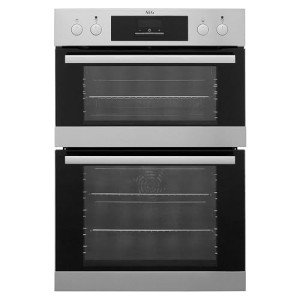
20
MeiTen Built In Ovens That Really Make Your Life Better

The Comprehensive Guide to Built-In Ovens
Introduction
Built-in ovens are a staple in modern-day kitchen areas, integrating beauty with performance. They offer a sleek visual and effective cooking abilities, making them a favored choice for property owners and cooking lovers alike. This post explores the advantages of built-in ovens, their numerous types, crucial functions to think about, installation pointers, and upkeep recommendations, in addition to often asked questions.
Benefits of Built-In Ovens
Built-in ovens featured a selection of advantages that contribute to their popularity. Here are some essential advantages:
- Space-Saving Design: Built-in ovens are designed to fit perfectly into kitchen cabinetry, enabling for a more orderly and space-efficient kitchen design.
- Aesthetic Appeal: They provide a sleek and modern appearance that can enhance the overall design of the kitchen.
- Enhanced Functionality: Built-in ovens frequently feature innovative features and technologies that support numerous cooking approaches.
- Enhanced Cooking Experience: Many built-in models consist of self-cleaning functions, temperature level probes, and programmable settings, improving the cooking experience.
- Increased Property Value: A properly designed kitchen with built-in appliances can boost the worth of a home.
Kinds Of Built-In Ovens
built in ovens uk in ovens; visit website,-in ovens integrated come in several types, each developed to satisfy different cooking preferences and requirements. Here are the primary types:
| Type of Built-In Oven | Description |
|---|---|
| Single Oven | A single, standalone oven for traditional baking and roasting. |
| Double Oven | Integrates 2 inbuilt ovens in one unit, permitting numerous dishes to prepare at different temperatures. |
| Wall Oven | Installed in the wall, maximizing counter space, ideal for little kitchens. |
| Convection Oven | Utilizes fans to distribute hot air for even cooking, boosting the results of baked goods. |
| Steam Oven | Makes use of steam for healthier cooking alternatives, protecting nutrients in food. |
Key Features to Consider
When choosing a built-in oven, a number of features can affect performance and use. Here are some necessary features to keep in mind:
Cooking Modes
- Bake: Traditional baking with bottom heat.
- Broil: Top heat cooking appropriate for browning and crisping.
- Convection: Circulates hot air for even cooking.
- Steam: Uses steam for healthier cooking alternatives.
Size and Capacity
- Requirement sizes normally range from 24 to 30 inches broad.
- Think about the internal capability-- it can range from 3 to 6 cubic feet, allowing for different meal sizes.
Controls and Smart Features
- Touchscreen Controls: Easy programming and changes.
- Smart Technology: Connectivity features enable remote monitoring and control via mobile phone applications.
Energy Efficiency
- Look for designs with ENERGY STAR scores, indicating lower energy consumption.
Safety Features
- Features like auto shut-off and child locks boost safety throughout operation.
Setup Tips
Installing a built-in oven may need professional support, but here are some basic tips to bear in mind:
- Choose the Right Location: Ensure there's enough space in your kitchen cabinetry for setup, bearing in mind ventilation requirements.
- Electrical Requirements: Check that your kitchen's electrical wiring satisfies the oven's power requirements, particularly for electric designs.
- Level the Oven: Ensure the oven is level to promote even cooking.
- Protect the Oven: Attach it securely to the kitchen cabinetry to avoid motion throughout usage.
Upkeep Advice
Routine upkeep is essential for the durability and performance of a built-in oven. Here's how to keep it in leading shape:
- Regular Cleaning: Wipe down surfaces after each use and carry out deep cleaning regularly.
- Check Seals: Inspect door seals for wear and ensure they maintain an airtight fit to improve energy efficiency.
- Calibrate Temperature: If food regularly comes out overcooked or undercooked, think about recalibrating the oven's temperature settings.
- Expert Servicing: Schedule annual check-ups with a trained service technician to preserve ideal efficiency.
FAQs
What is the distinction between a built-in oven and a freestanding oven?
Built-in ovens are designed to be set up within cabinets, offering a seamless look. In contrast, freestanding integrated ovens uk are standalone systems that normally include their own cooktop.
Are built-in ovens more pricey than freestanding designs?
Normally, built-in ovens can be more pricey due to the included installation costs and advanced functions. Nevertheless, prices differ commonly based upon brand name, size, and functionalities.
Can I set up a built-in oven myself?
While it is possible to set up a built-in oven yourself, it is recommended to employ an expert to ensure correct installation, especially if modifications to cabinetry or electrical work are needed.
How often should I clean my built-in oven?
It is a good idea to clean your built-in oven routinely after heavy usage. For deeper cleansings, use the self-cleaning function if available or periodically perform manual cleaning to prevent accumulation.
Built-in ovens are an important addition to any kitchen, Built In Ovens providing both visual appeal and advanced cooking capabilities. By understanding their types, features, installation, and maintenance requirements, homeowners can make educated options that enhance their cooking experience and improve the total value of their homes. As kitchen designs continue to develop, built-in ovens integrated will likely stay a prominent option for contemporary homes.

Reviews